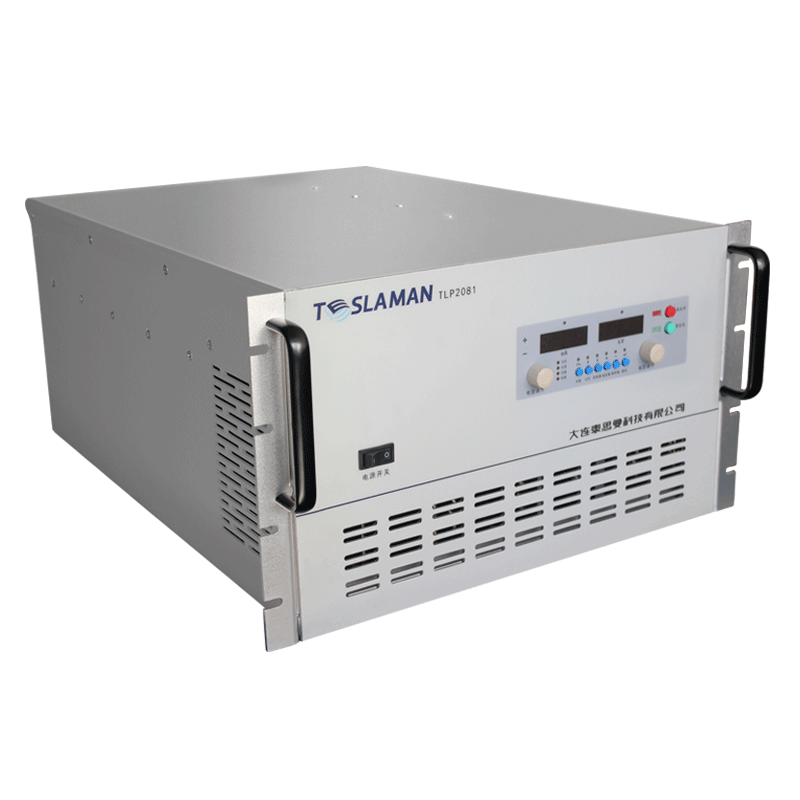Flexible Regulation Technology of High-Power Adjustable Power Supplies and Its Multi-Domain Applications
High-power adjustable power supplies (output power ≥1 kW) have become core equipment in modern industry and scientific research due to their wide-range output, high-precision regulation, and multi-mode compatibility. Their core value lies in achieving precise dynamic adjustment of voltage (0–1500V), current (0–3000A), and power (up to 500kW) through advanced control topologies and intelligent strategies, meeting differentiated demands in complex scenarios.
Ⅰ. Technical Advantages: Dynamic Response and Multi-Modal Control
1. Wide-Range High-Precision Output:
Voltage accuracy ≤±0.1%, current accuracy ≤±0.2%, and ripple factor <0.1%, ensuring stability in sensitive loads such as battery testing and motor drives.
Automatic Multi-Mode Switching (Constant Voltage CV, Constant Current CC, Constant Power CP) adapts to different load characteristics. For example, in new energy vehicle battery testing, CV mode is used for constant-voltage charging, while CC mode handles high-current discharge tests without manual intervention.
2. Rapid Dynamic Response:
Response time <5 ms during load transients prevents voltage drops or overshoots. This relies on high-frequency PWM modulation technology (e.g., 25 kHz SPWM) and closed-loop feedback systems to correct output waveforms in real-time.
Ⅱ. Core Regulation Technologies: From Topology Design to Intelligent Algorithms
1. Efficient Power Topology:
Buck Converter reduces switching losses, paired with IGBT modules and snubber circuits (e.g., RCD clamping) to suppress voltage spikes, improving efficiency to over 93%.
Series Resonant Inversion technology filters high-frequency carrier waves, delivering pure sine waves for high-quality power-sensitive scenarios like communication base stations.
2. Digital Intelligent Control:
MCU-based (e.g., SOC196 microcontroller) programmable systems dynamically adjust digital potentiometer resistance via SPI buses, achieving 0.01V-level voltage regulation accuracy.
Load Sensing and Predictive Control: Real-time monitoring of load changes pre-adjusts output parameters. For instance, automatic switching to CC mode during motor startup suppresses speed fluctuations.
Ⅲ. Application Scenarios: Flexibility for Complex Requirements
1. New Energy and Power Testing:
Simulates EV battery charge-discharge curves, supports 0–800V voltage sweep tests, and feeds recycled energy back to the grid, reducing energy consumption by 30%.
2. Communication and Industrial Equipment:
Provides 176–286V wide-voltage input for 5G base stations, compatible with grid fluctuations; overvoltage protection at 325V±5V prevents device breakdown.
Enables remote programming of power parameters in production lines, synchronizing test modes across multiple devices to improve efficiency.
3. Scientific Research and High-Precision Experiments:
Integrates with platforms like LabVIEW for automated testing, with output ripple <10 mV, meeting the needs of semiconductor device characterization.
Ⅳ. Energy Efficiency and Reliability Innovations
1. Energy Management Strategies:
Power Factor Correction (PF>0.93) reduces reactive losses; energy feedback technology converts braking energy into AC input, achieving 85% reuse efficiency.
2. Multi-Layer Protection Mechanisms:
Soft-start circuits suppress inrush currents; fault-locking functions shut down IGBTs during overcurrent/overheating events and automatically discharge filter capacitor energy.
Conclusion
The flexible regulation capabilities of high-power adjustable power supplies mark a leap in power electronics from single-output to adaptive multi-modal technology. With future integration of SiC devices and AI algorithms, their response speed and energy efficiency will further advance, providing foundational support for cutting-edge fields such as ultra-high-voltage laboratories and pulsed power systems.




















